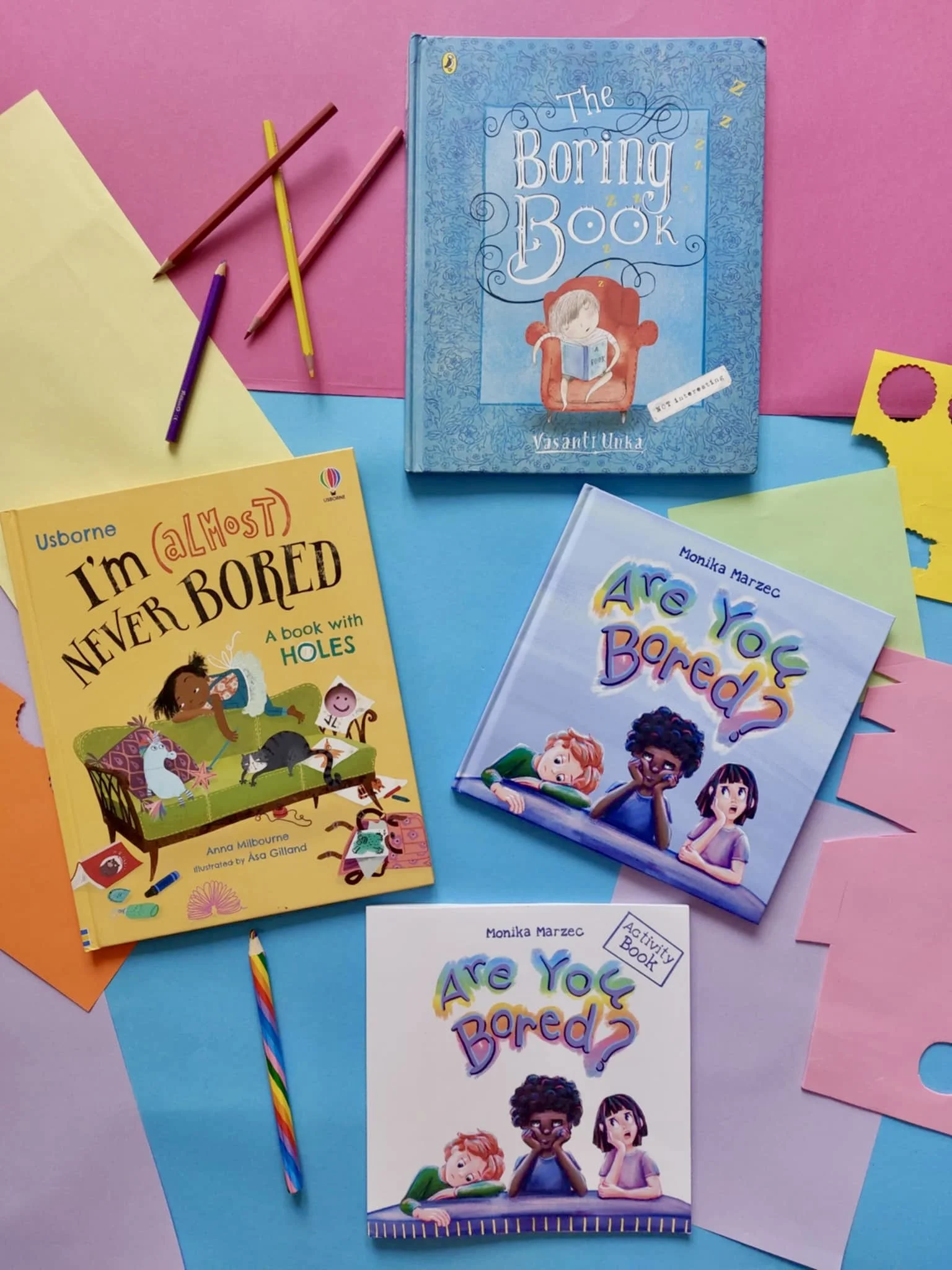Books About Boredom (and Why It Might Not Be So Bad After All!)
Books for boredom
“Boredom isn’t the end of the story — it’s the beginning of creativity.
These picture books don’t fight boredom; they turn it into an invitation to wonder, explore, and imagine.”
Boredom isn’t always the enemy — sometimes it’s the spark that starts a story, an idea, or an adventure. Today, I’m sharing a few favorite picture books that tackle the theme of boredom from different angles — from playful holes to quiet reflection to creative exploration. As the author of Are You Bored?, I’ve always been fascinated by what boredom really means for children — and why it can open the door to creativity rather than just frustration.
The Boring Book by Vasanti Unka
At first glance, The Boring Book looks… well, boring. But inside, it’s anything but! Vasanti Unka turns the idea of boredom into a playful, metafictional exploration that pokes fun at itself while cleverly pulling readers along.
Through gentle humor and inventive typography, the book asks big questions: What does “boring” actually mean? Can something be boring for one person but fascinating for another? The minimalist illustrations and clever text design give the book a unique visual identity, sparking curiosity in readers who might have picked it up with low expectations.
What I love most is how The Boring Book turns boredom on its head — instead of fighting it, the story embraces it, transforming “boring” moments into a chance to notice details, patterns, and surprising ideas. It quietly suggests that boredom isn’t empty; it’s a starting point.
I’m (Almost) Never Bored by Anna Milbourne, illustrated by Asa Gilland
Anna Milbourne’s I’m (Almost) Never Bored is cheerful, playful, and wonderfully relatable. The story follows a child narrator who notices that even seemingly dull moments — like waiting in the car or sitting at the table — can actually be full of tiny discoveries.
What makes this book especially charming is its design: it’s literally “a book with holes,” encouraging little readers to peek through pages and discover hidden details. The bright, textured illustrations by Asa Gilland feel cozy and familiar, showing everyday spaces as places of wonder rather than monotony.
I love how this book empowers children to see themselves as explorers of their own world — it teaches them that curiosity is a skill, and that boredom can often be chased away by looking just a little closer.
Are You Bored? by Monika Marzec
As the author and illustrator of Are You Bored?, this book is especially close to my heart. It was inspired by countless moments watching children sigh, “I’m bored!” — and wondering what might happen if boredom wasn’t something to avoid, but something to explore.
The book is written as a direct, conversational dialogue with the reader. Three children appear throughout the book, silently reacting to the narrator’s playful suggestions: reading a new book, drawing a silly picture, inventing a game. Rather than offering one answer to boredom, it invites kids to see how many creative paths they could take instead.
The illustrations are warm, slightly humorous, and intentionally simple, leaving space for children to imagine what they might do next. My hope is that young readers finish the book not with a list of instructions, but with a spark of curiosity and confidence to make boredom their own starting point.
The companion Activity Book takes the ideas from Are You Bored? and puts them directly into children’s hands. It’s filled with creative prompts: drawing activities, silly tasks, coloring pages, and playful games that don’t require special supplies.
What makes this book special isn’t just what’s inside, but how it encourages open-ended thinking. Rather than giving children tasks to complete “correctly,” it invites them to add their own ideas, doodles, and twists. The goal isn’t perfection; it’s engagement, self-expression and promoting reading as an open door to a whole new world of ‘imagine!’.
As an illustrator, I loved designing pages that feel open and welcoming, hoping to give kids the sense that they’re co-creating the book rather than just filling it in. It’s a celebration of creativity born from boredom — and proof that boredom can lead anywhere.
Final thoughts
What these books all share is a quiet but powerful message: boredom isn’t a problem to fix, but a spark to follow. From holes in the page to whispered questions, from silly sketches to new stories, boredom opens the door to creativity, wonder, and self-discovery.
If you’d like, I can also help write short Instagram teasers for each review, or a single carousel post that ties them all together!
